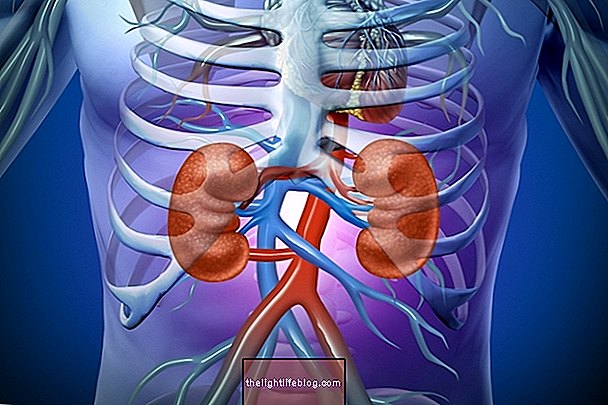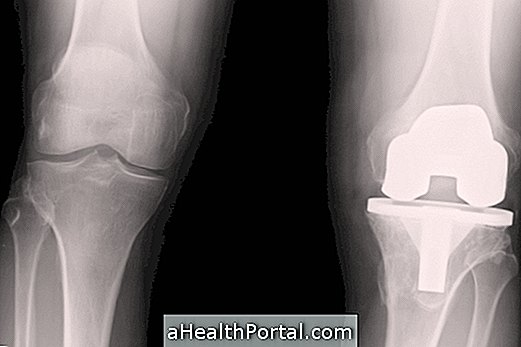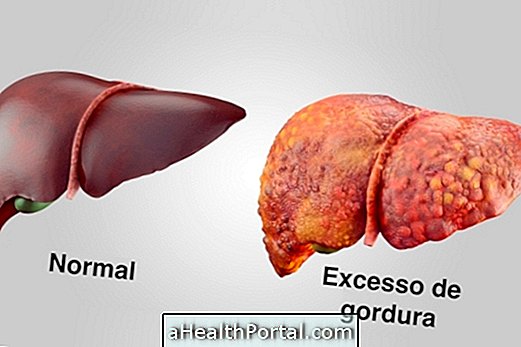Bone cancer causes symptoms such as pain and swelling of the joints that can break easily and often, and early diagnosis and treatment of bone cancer increases the chances of a cure.
However, the primary bone cancer, which is one that directly affects the bones is very rare, with secondary cancer being more common. This type of cancer is usually a metastasis, that is, before bones are affected there has been the development of a malignant tumor in another organ of the body such as lung or prostate cancer cells and the primary tumor have spread to the bones creating metastases, being that in the majority of the cases, it has no cure and, therefore, the treatment is palliative to maintain the comfort of the patient.

Symptoms of bone cancer
The most common symptoms of bone cancer include:
- Pain in the bones: usually at the beginning, the pain is not constant but it can be very intense at night or when you move your legs, like to walk;
- Swelling of the joints: A lump may develop in the joints, increasing pain and discomfort, especially in the knees and elbows;
- Bones that break easily: Bone fractures can occur because it is more fragile, with more common fractures of the femur or spine.
In addition to these signs of cancer, the tumor can lead to weight loss for no apparent reason, intense fatigue and constant fever. In case the cancer spreads to other organs, such as lung for example, it can cause other more specific symptoms such as difficulty breathing.
How is the diagnosis of bone cancer diagnosed?
To diagnose the cancer that appears in the bones, the doctor has to observe the bones of the patient and usually indicates an X-ray to confirm the suspicion.
In addition, it may be important to perform other complementary tests, such as a biopsy to confirm the diagnosis of bone cancer.
Treatment for bone cancer
Treatment for bone cancer is indicated by the oncologist and depends on the type of tumor, such as chondrosarcoma or Edwing's tumor, for example, and the size and location of the tumor, and usually includes chemotherapy, radiation therapy and, in some cases, performing surgery to amputate the affected limb, maintaining, if possible, the maximum of its functionality.
However, when bone cancer is at a very advanced stage, which usually occurs in secondary bone cancer, the most common treatment is palliative treatment, which is done to maintain patient comfort by reducing pain and discomfort caused by symptoms of cancer.
This treatment can be done at the hospital or at home, with all measures that support the patient in the final phase of life, administered strong analgesics such as morphine to relieve pain, applying oxygen to relieve shortness of breath and initiating tube feeding to keep the patient hydrated and nourished.
Read How Bone Cancer Treatment is Done and learn all about the best treatment in each case.






















